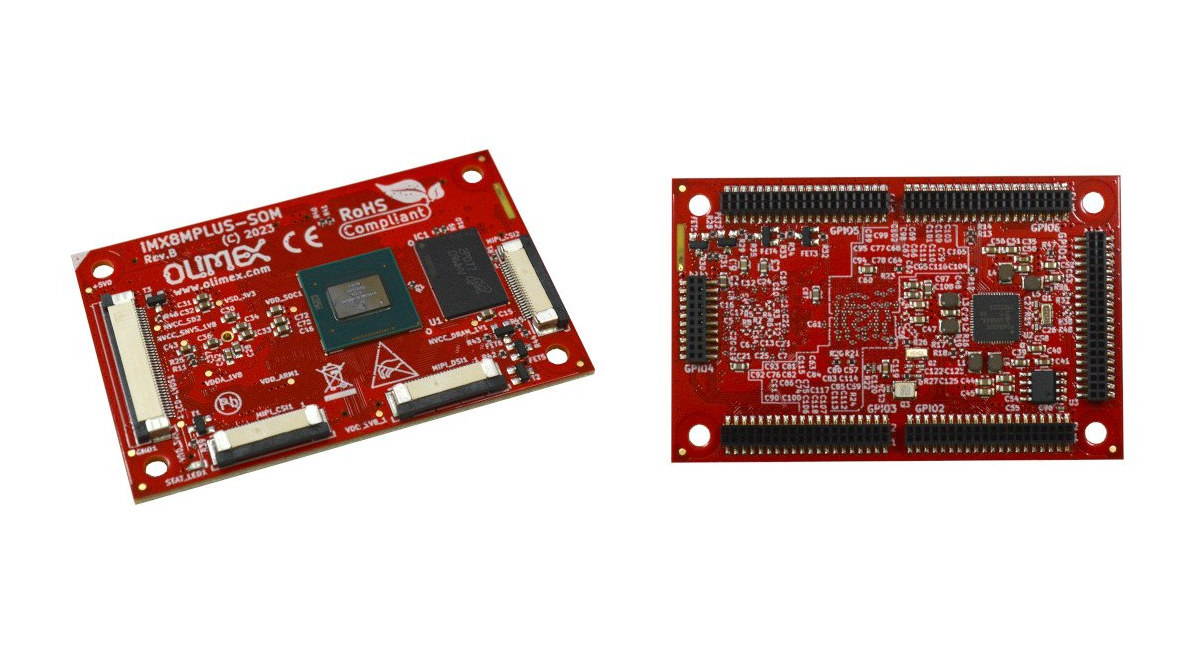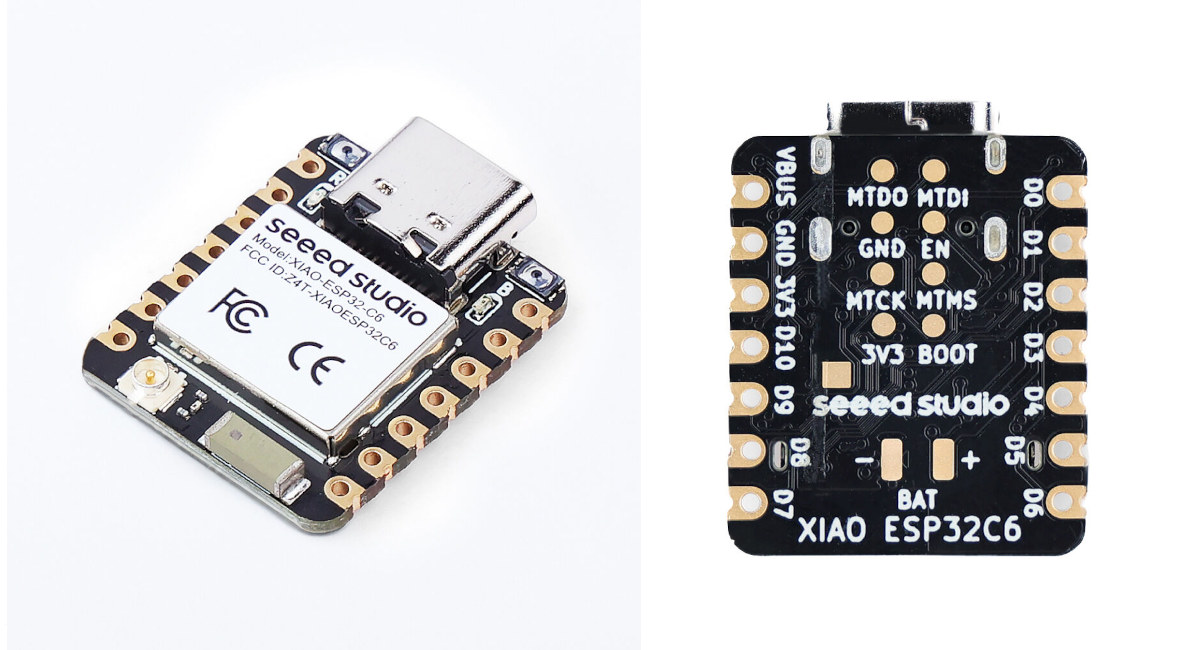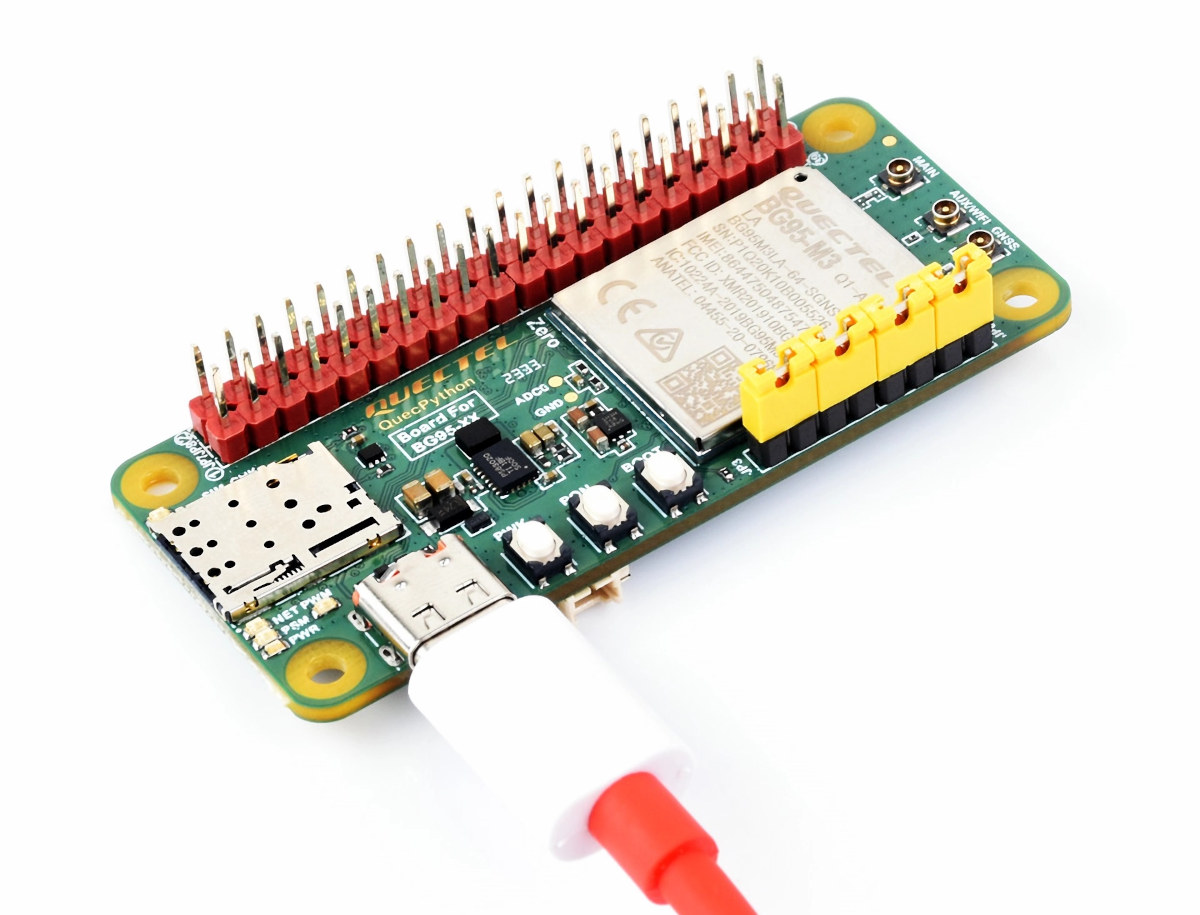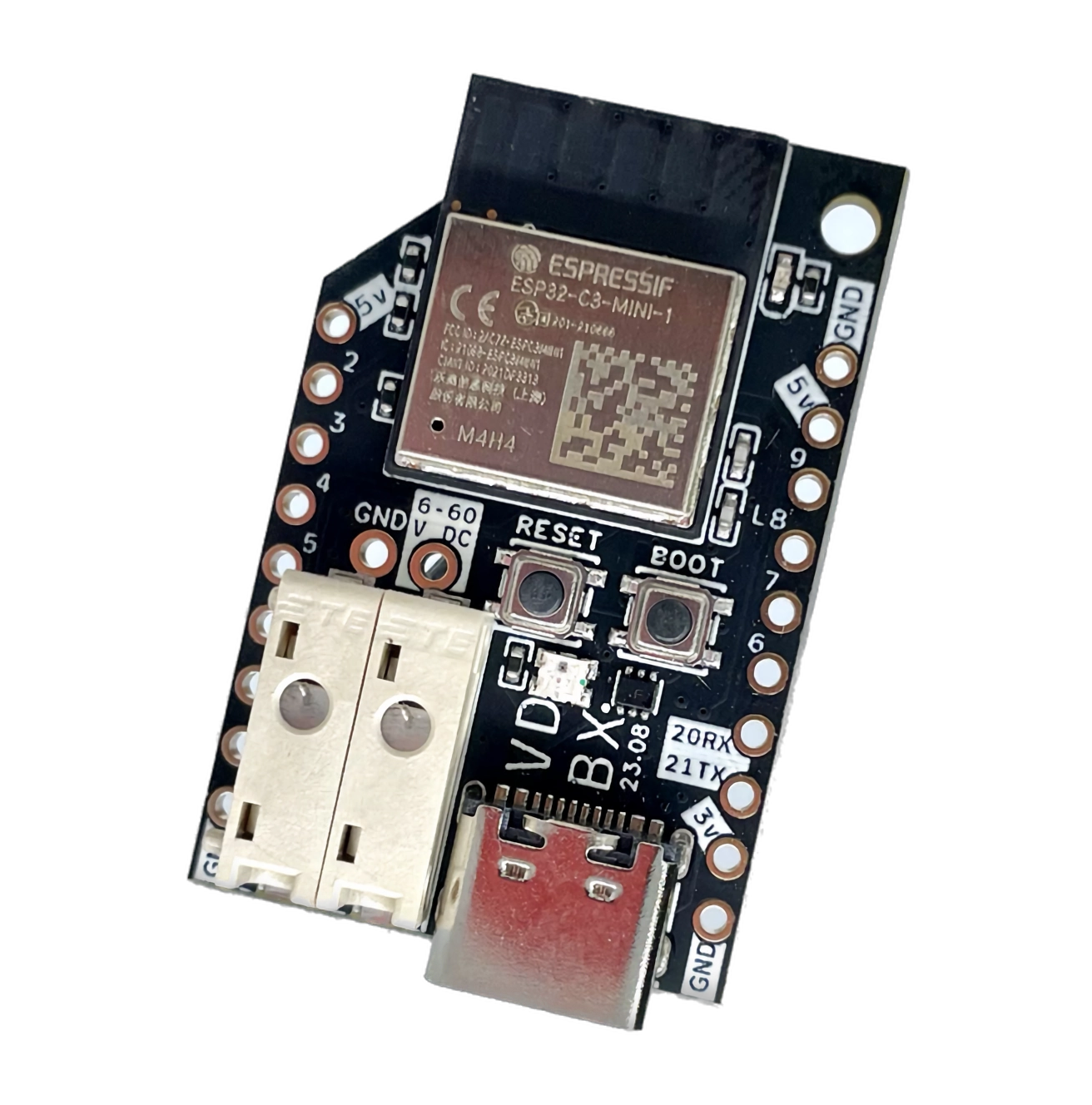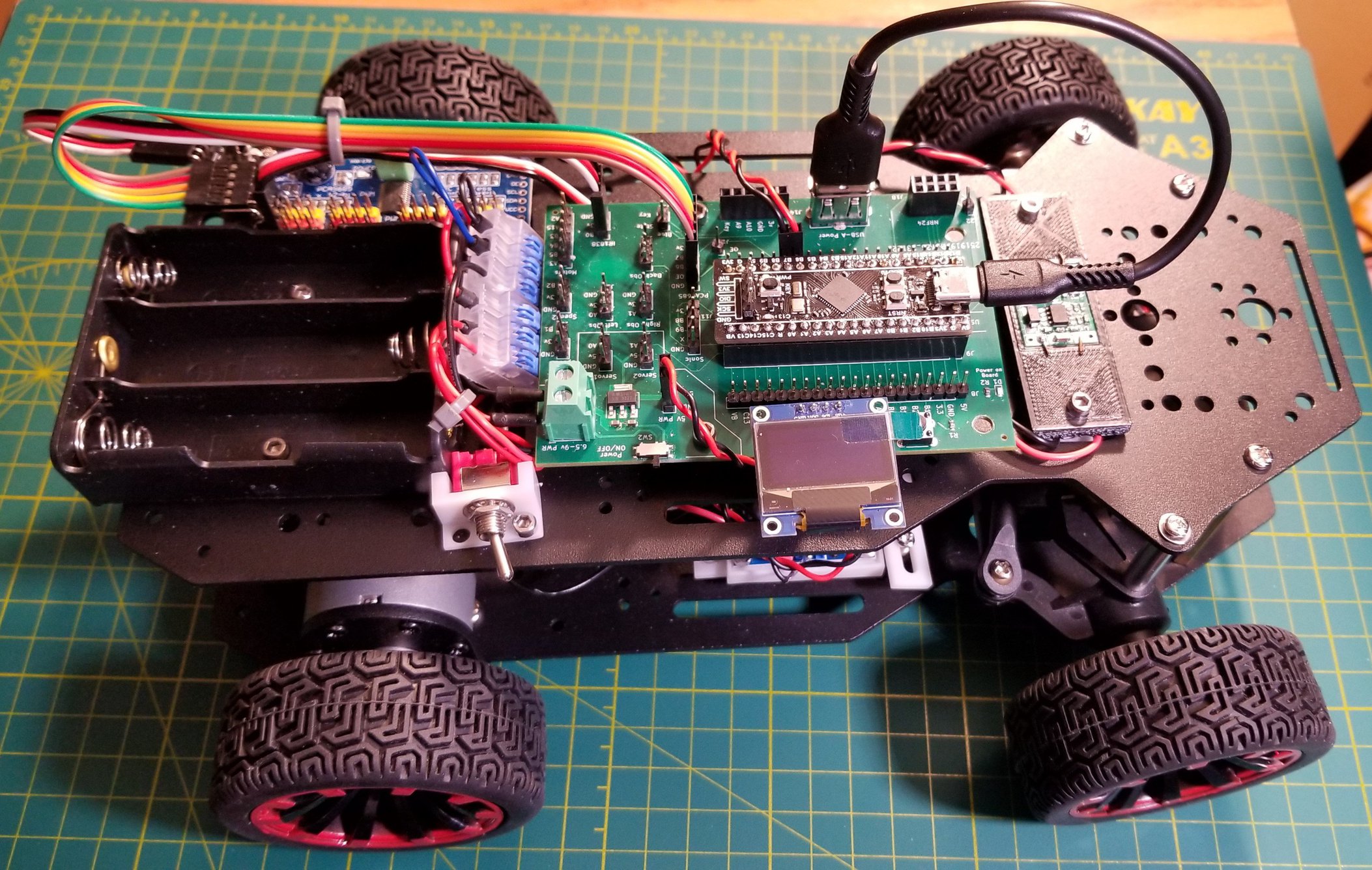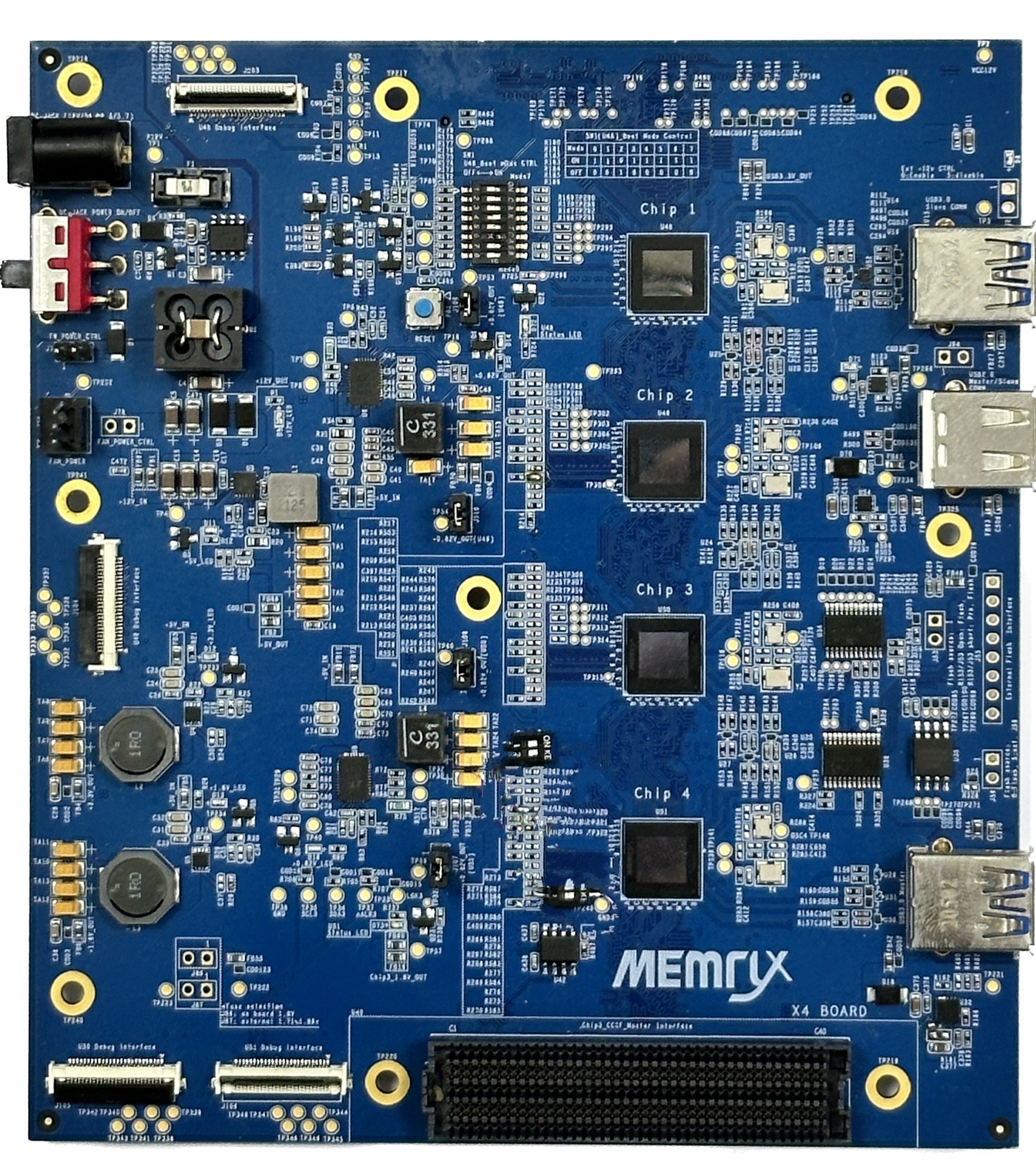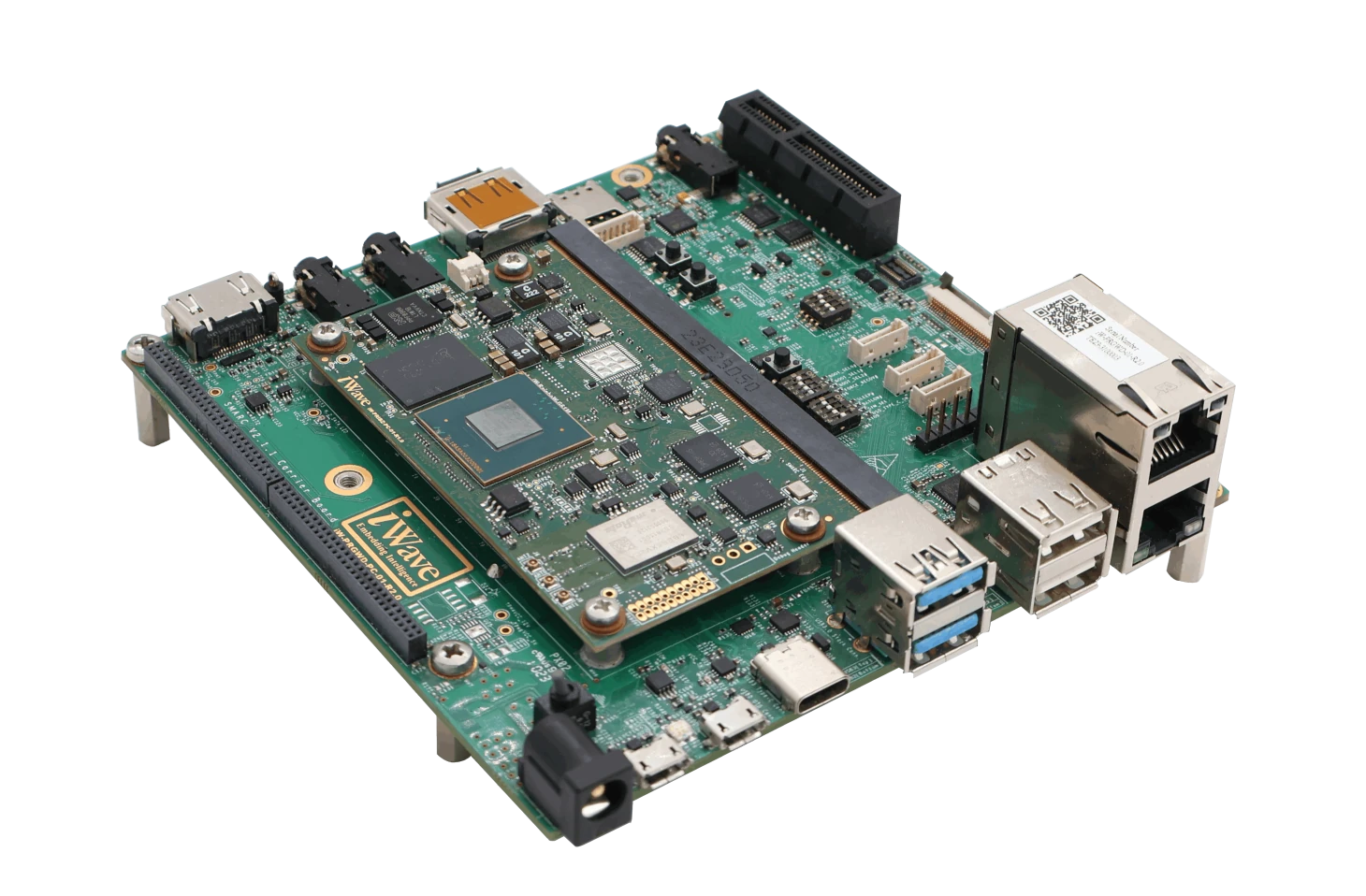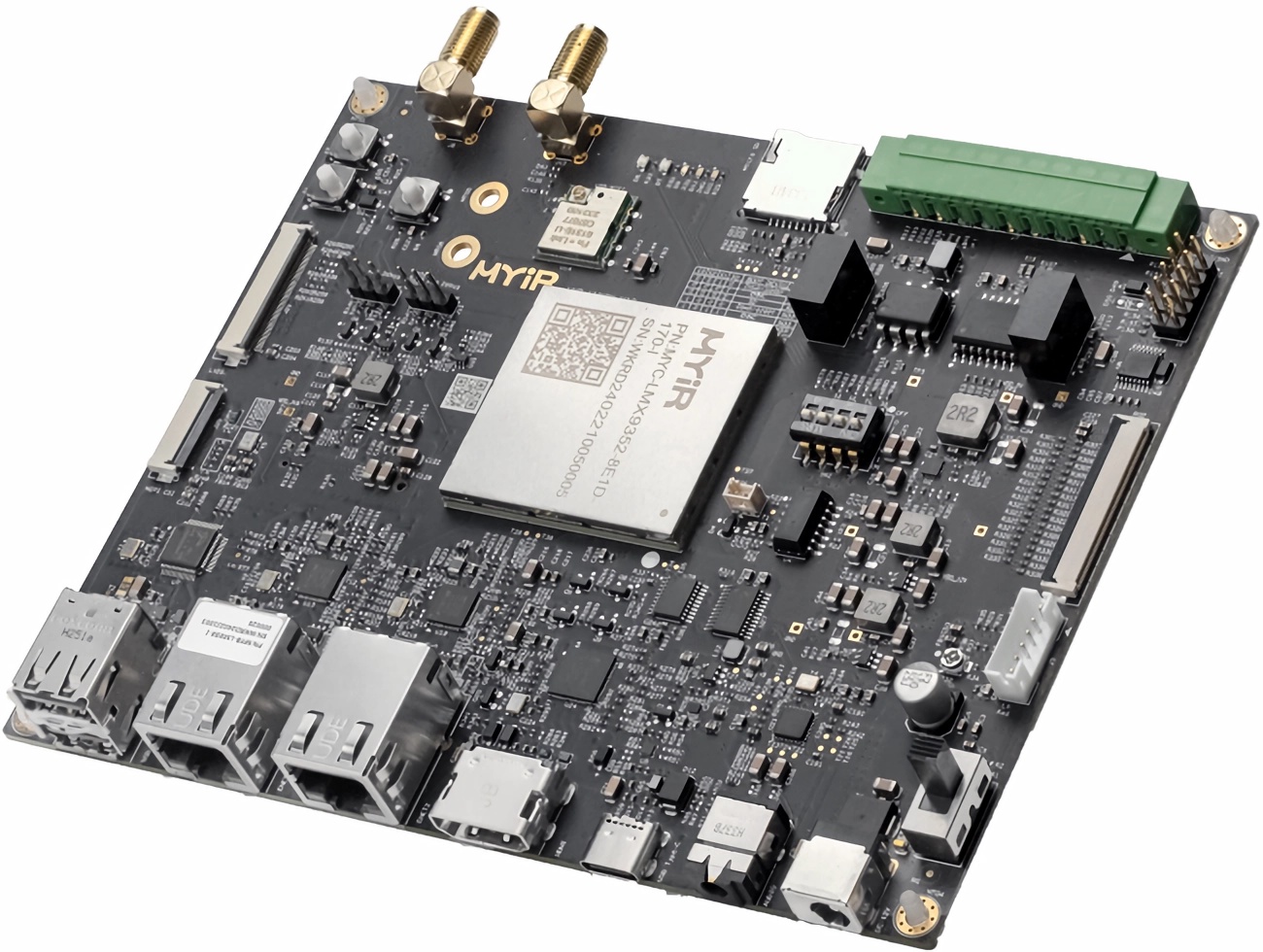Olimex has just announced the iMX8MP-SOM-4GB-IND industrial-grade, open-source hardware system-on-module based on NXP i.MX 8M Plus Arm AI SoC and 4GB LPDDR4 thar runs mainline Linux and operates in the -20°C to +85°C temperature range. The CPU module also features a wide range of interfaces exposed through female headers including HDMI 2.0, MIPI-DSI, LVDS, dual MIPI CSI, dual Gigabit Ethernet, CAN FS and more. Olimex also designed the iMX8MP-SOM-EVB evaluation board for easy evaluation. Olimex iMX8MP-SOM-4GB-IND system-on-module Specifications: SoC – NXP i.MX 8M Plus (MIMX8ML8CVNKZAB) CPU Quad-core Arm Cortex-A53 processor @ up to 1.6 GHz Arm Cortex-M7 real-time core @ 800 MHz Cache – 512KB GPU – Vivante GC7000UL 3D GPU, Vivante GC520L 2D GPU VPU – 1080p H.265/H.264 video decoder & encoder DSP HiFi 4 DSP AI accelerator – 2.3 TOPS Neural Processing Unit (NPU) System Memory – 4GB LPDDR4 Storage – EEPROM for Linux configuration Display and camera […]
Tiny XIAO ESP32C6 WiFi, BLE, and 802.15.4 IoT board offers up to 16 GPIO pins
Seeed Studio has added yet another member to their XIAO board family with the XIAO ESP32C6 powered by an ESP32-C6 WiFi 6, Bluetooth LE 5, and 802.15.4 (Thread/Zigbee) RISC-V microcontroller and offering up to 16 GPIOs (headers + pads) in a tiny 21 x 17.5 mm form factor that’s smaller than a typical stamp and makes it one of the smallest ESP32-C6 boards around. The company started the XIAO family with the Seeeduino XIAO (Microchip SAMD21G18) in 2020, and since then they’ve made several other variants with different processors including the XIAO RP2040, XIAO ESP32C3, and XIAO ESP32S3. The XIAO ESP32C6 is the latest (10th) iteration of the board and the first to support WiFi 6, BLE, and 802.15.4 wireless connectivity. XIAO ESP32C6 specifications: Wireless MCU – Espressif Systems ESP32-C6 CPU Single-core 32-bit RISC-V clocked up to 160 MHz Low-power RISC-V core @ up to 20 MHz Memory – 512KB […]
Raspberry Pi Zero HAT compatible Quectel BG95-M3 Zero cellular IoT board runs QuecPython MicroPython firmware
Waveshare BG95-M3 Zero is a Raspberry Pi Zero-sized SBC based on Quectel BG95-M3 cellular IoT module with LTE Cat M1 (eMTC), LTE Cat NB2 (NB-IoT), and eGPRS connectivity as well as GNSS. The board supports Raspberry Pi HATs and ships with Quectel’s QuecPython MicroPython firmware for easier programming. We’ve previously covered various SBCs and Raspberry Pi HATs based on Quectel modules for cellular IoT and GNSS connectivity with the likes of Olimex NB-IoT-Devkit (with a BC66 module), S-2Connect Creo evaluation kit, Sixfab 5G Modem HAT, and others. Olimex BC66 board supports Arduino programming, but most of the other boards rely on a host processor. Waveshare’s BG95-M3 Zero is a standalone SBC offering compatibility with Raspberry Pi Zero (p)HATs, and Quectel also developed its own MicroPython firmware called QuecPython that works with several of their modules, including the BG95-M3. BG95-M3 Zero specifications: Cellular IoT Module – Quectel BG95-M3 CPU – Arm […]
FLIP_C3 ESP32-C3 board takes up to 60V DC input, ships with ESPHome firmware
Voidbox FLIP_C3 is an open-source hardware board powered by an ESP32-C3 WiFi & BLE microcontroller that takes up to 60V DC power input feeding a 5V/2A DC-DC step-down converter and flashed with ESPHome firmware by default for Home Assistant support. The board incorporates a push-in spring release connector which means stranded (ferrules or tinning are suggested) and solid wires can be used in deploying the device in off-grid/battery-powered systems with up to 16s LiFePO4 delivering 48V through the 6-60V input port on the ESP32-C3 board. The onboard WS2812B LED can be used as a null pixel/level shifter for longer strings of addressable pixels. The ESP32-C3 – due to its support for Wi-Fi and BLE connectivity – is a popular SoC for IoT solutions and powers home and industrial automation devices such as NanoCell v2.1, Spark Analyzer, LOLIN C3 Pico, and the LILYGO T-RSC3. It is built for home automation applications […]
Easily build a robot car with the Car Base Board for the STM32F411 “Black Pill” board
The Car Base Board from Applying Microcontroller Solutions is a modular platform for building robot car projects powered by the WeAct Studio Black Pill development board. The Black Pill board is an upgrade to the “Blue Pill 2” board and features the STM32F411CEU6 microcontroller running at 100MHz with 512 KB of flash memory, 128 KB SRAM, and a USB Type-C port for power and programming. The Care Base Board printed circuit board is a base controller that takes hardware expansions such as wireless modules, servos, and sensors to monitor and control a robot car. The onboard headers provide a straightforward way to wire these connections and help prevent a tangled mess (rat’s nest) of wires. The PCB’s design makes it easy to use widely-available, “generic” devices and boards in development and to power all of them with batteries. It also allows the developer to select their favorite wireless communication device. […]
MemryX MX3 edge AI accelerator delivers up to 5 TOPS, is offered in die, package, and M.2 and mPCIe modules
Jean-Luc noted the MemryX MX3 edge AI accelerator module while covering the DeGirum ORCA M.2 and USB Edge AI accelerators last month, so today, we’ll have a look at this AI chip and corresponding modules that run computer vision neural networks using common frameworks such as TensorFlow, TensorFlow Lite, ONNX, PyTorch, and Keras. MemryX MX3 Specifications MemryX hasn’t disclosed much performance stats about this chip. All we know is it offers more than 5 TFLOPs. The listed specifications include: Bfloat16 activations Batch = 1 Weights: 4, 8, and 16-bit ~10M parameters stored on-die Host interfaces – PCIe Gen 3 I/O and/or USB 2.0/3.x Power consumption – ~1.0W 1-click compilation for the MX-SDK when mapping neural networks that have multiple layers Under the hood, the MX3 features MemryX Compute Engines (MCE) which are tightly coupled with at-memory computing. This design creates a native, proprietary dataflow architecture that utilizes up to 70% […]
NXP i.MX 95 SMARC 2.1 system-on-modules – ADLINK LEC-IMX95 and iWave iW-RainboW-G61M
Several companies have unveiled SMARC 2.1 compliant system-on-modules powered by the NXP i.MX 95 AI SoC, and today we’ll look at the ADLINK LEC-IMX95 and iWave Systems iW-RainboW-G61M and related development/evaluation kits. The NXP i.MX 95 SoC was first unveiled at CES 2023 with up to six Cortex-A55 application cores, a Cortex-M33 real-time core, and a low-power Cortex-M7 core, as well as an eIQ Neutron NPU for machine learning applications. Since then a few companies have unveiled evaluation kits and system-on-modules such as the Toradex Titan evaluation kit or the Variscite DART-MX95 SoM, but none of those were compliant with a SoM standard, but at least two SMARC 2.1 system-on-modules equipped with the NXP i.MX 95 processor have been introduced. ADLINK LEC-IMX95 Specifications: SoC – NXP i.MX 95 CPU Up to 6x Arm Cortex-A55 application cores clocked at 2.0 GHz with 32K I-cache and D-cache, 64KB L2 cache, and 512KB […]
New NXP i.MX 93-based system-on-modules launched by MYiR, Variscite, and Compulab
We have covered announcements about early NXP i.MX 93-based system-on-modules such as the ADLINK OSM-IMX93 and Ka-Ro Electronics’ QS93, as well as products integrating the higher-end NXP i.MX 95 processor such as the Toradex Titan Evaluation kit. Three additional NXP i.MX 93 SoMs from Variscite, Dart, and Compulab are now available. Targeted at industrial, IoT, and automotive applications, the NXP i.MX 93 features a 64-bit dual-core Arm Cortex-A55 application processor running at up to 1.7GHz and a Cortex-M33 co-processor running at up to 250MHz. It integrates an Arm Ethos-U65 microNPU, providing up to 0.5TOPS of computing power, and supports EdgeLock secure enclave, NXP’s hardware-based security subsystem. The heterogeneous multicore processing architecture allows the device to run Linux on the main core and a real-time operating system on the Cortex-M33 core. The processor is designed for cost-effective and energy-efficient machine learning applications. It supports LVDS, MIPI-DS, and parallel RGB display protocols […]


